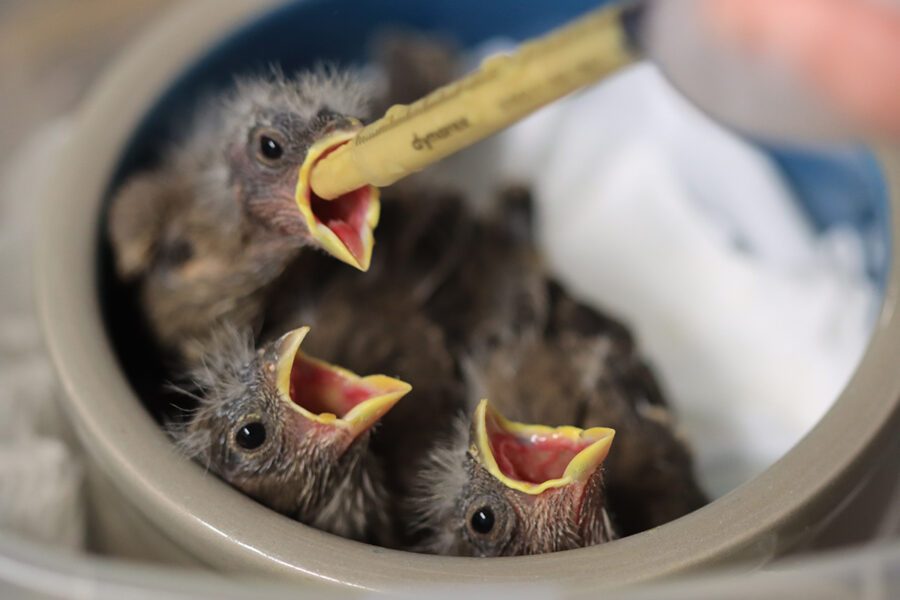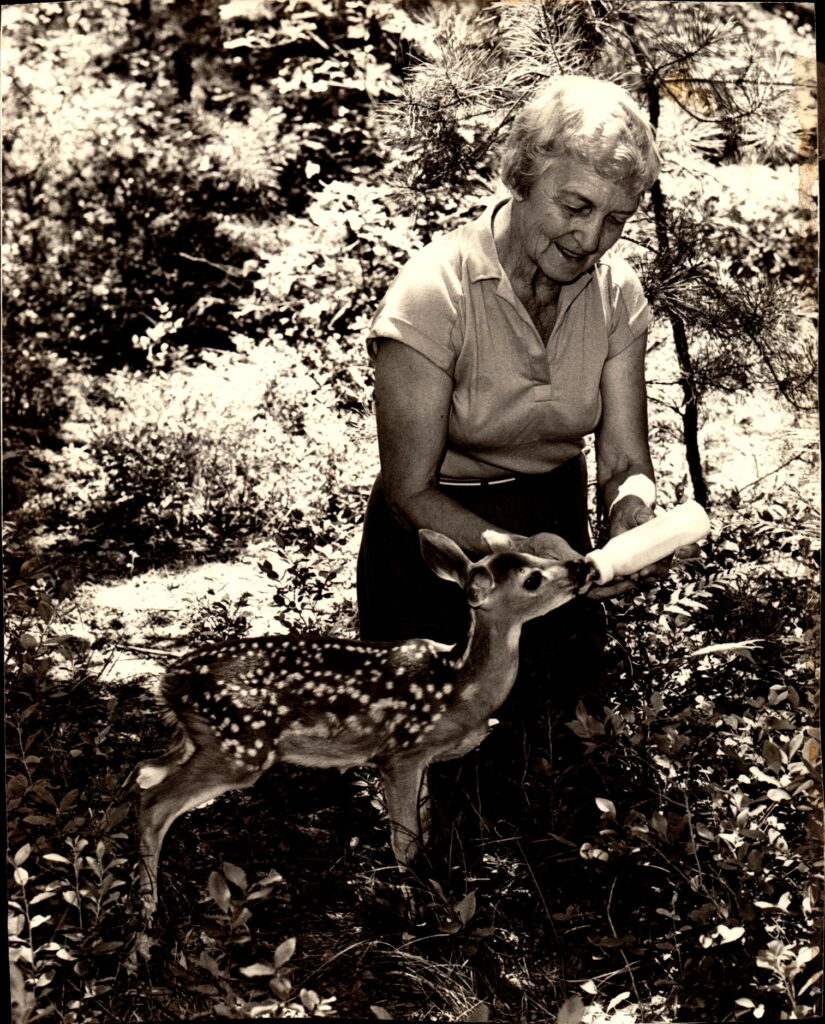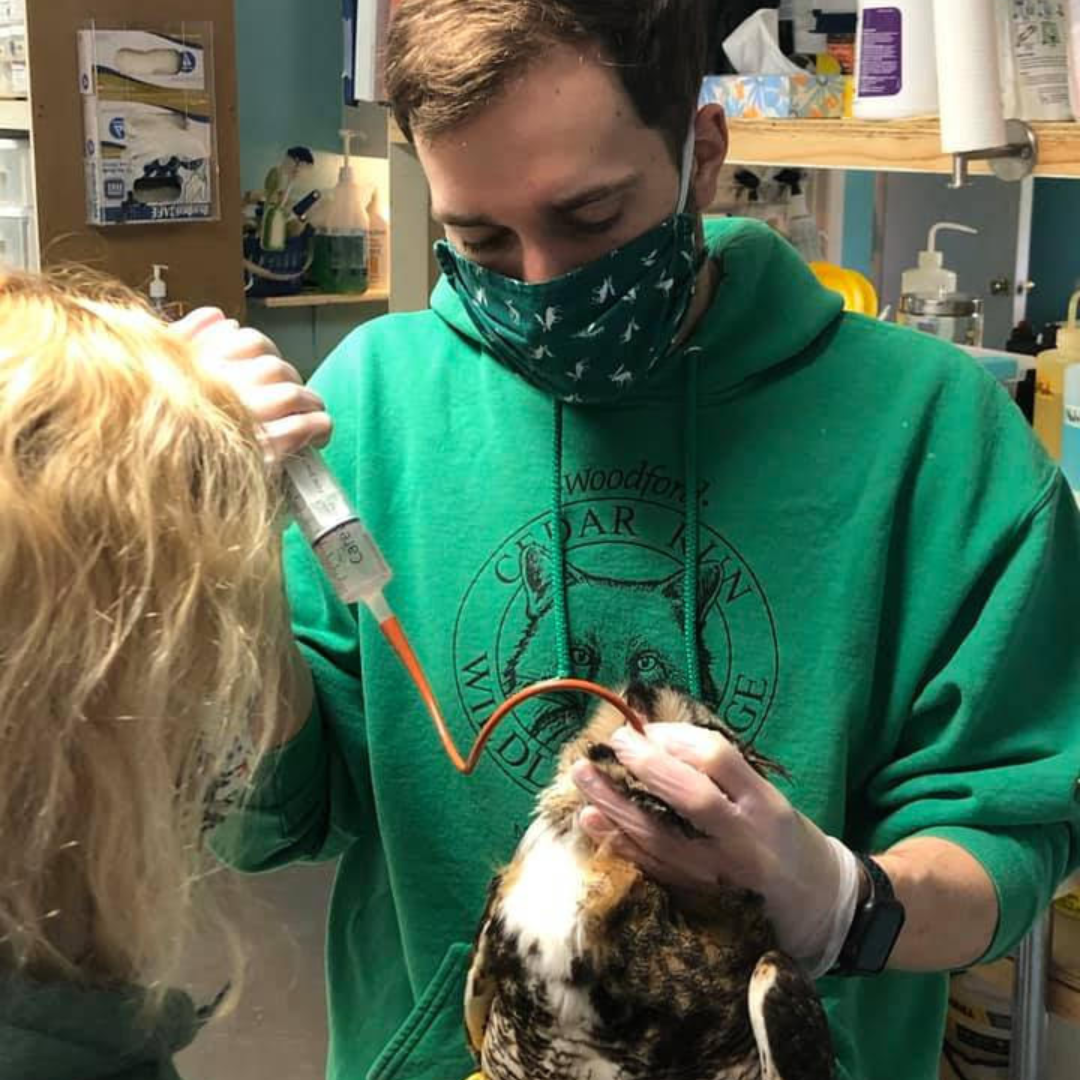
Woodford Cedar Run Wildlife Refuge
Integral to the Community, Committed to South Jersey’s Ecosystem
Owls, hawks, opossums, squirrels, songbirds, rabbits, foxes, baby skunks and more. All are integral to the ecosystem and wildlife throughout South Jersey. We may not even think about these animals that surround us as we go about our daily lives. Yet many become injured, orphaned or sick and can often be rehabilitated and ultimately returned to their natural habitat.
Enter Woodford Cedar Run Wildlife Refuge in Medford, comprised of 171 acres of preserved land within the Pinelands National Reserve. Cedar Run encompasses a Wildlife Rehabilitation Hospital, the Woodford Nature Center, hiking trails, a summer camp, environmental educational programs for all ages (on and off-site, including schools and senior centers), and hosts an array of special events.
“We take in and treat almost all species native to New Jersey,” explained Mike O’Malley, executive director of Cedar Run. “Our mission is to serve as a community resource on the importance of protecting and enhancing healthy ecosystems for all.”
O’Malley points out that they are the biggest and busiest wildlife refuge in New Jersey and the tri-state region. More than 20,000 people visit the refuge every year. Their multipronged mission—including preserved land, a nature center, wildlife rehabilitation, and environmental education—is what sets them apart.

History
Cedar Run was officially established in 1957 by Jim and Betty Woodford, who built their first home on the land overlooking a lake. They had originally purchased 185 acres as a summer retreat in 1951 but moved there permanently out of love for the property.
The refuge’s mission began when a local resident brought an injured owl to Betty for help. Over the next four decades, the Woodfords became known for their work in preservation, wildlife rehabilitation, and education. Betty Woodford became a local authority on the flora and fauna of the Pinelands and was known as an expert botanist, naturalist, photographer, and rehabilitator.
In 1982, Cedar Run became a 501(c)(3) non-profit and expanded its facilities. A Green Acres grant in 1997 preserved the land and buildings, which now house administrative offices, the hospital, and the nature center.
Cedar Run operates with 26 staff members (full and part-time), a nine-member Board of Trustees, and Jeanne Woodford—daughter of the founders—serving as board president. An additional 250 volunteers, ranging in age from 16 to 80+, help power the organization. “Volunteers are the lifeblood of the organization,” O’Malley says.
From Intern to Executive Director
O’Malley began with Cedar Run in 2011 as a student at Stockton University, seeking an internship at the hospital. “I knew I wanted to do something with wildlife,” he said. That experience sparked a career. In 2014, he became a licensed wildlife rehabilitator and joined the staff in 2015. He was named executive director in 2021.
To become a licensed rehabilitator at Cedar Run, staff participate in an apprenticeship through the NJ Fish and Wildlife Division. They also collaborate with veterinarians, including volunteers from Animal and Bird Health Care Center in Cherry Hill. “Our dream is to someday have our own full-time vet on site,” O’Malley said.
“Last year, we treated over 170 different species and took in more than 7,700 animals,” said O’Malley, who lives in Medford. The number of treated animals has doubled since 2011. Rabbits are the most commonly treated—over 1,500 annually. Songbirds also represent a large share of intakes.

Calls for Assistance
Calls come mostly from residents of Burlington, Camden, and Gloucester counties. People often report injured birds, struggling fawns, or orphaned rabbits. O’Malley encourages anyone who finds wildlife in distress to call first for guidance before touching or handling the animal.
Cedar Run is open seven days a week; the hospital is open 365 days a year. “Most of the wildlife we treat come to us thanks to good Samaritans,” O’Malley explained. “We help walk people through what to do—like if they spot a hawk injured by the roadside.”
He also cautions against approaching rabies vector species such as raccoons, skunks, bats, or groundhogs. In those cases, people should contact local animal control authorities.

Community Support
As a non-profit organization, Cedar Run relies heavily on private donors. Only about 10–15% of funding comes from grants. Additional funds come from their environmental education programs and special events.
As a Certified Fund Raising Executive (CFRE), O’Malley assures donors that the organization follows the highest ethical standards. “We have a long history of being embedded in the fabric of the local community,” he says. “Our biggest long-term goal is to expand the capacity of our hospital.”
The impact Cedar Run has on the region is immeasurable. “Nothing can really compare with the feeling of rehabilitating an animal and releasing it back into the wild,” O’Malley said.

